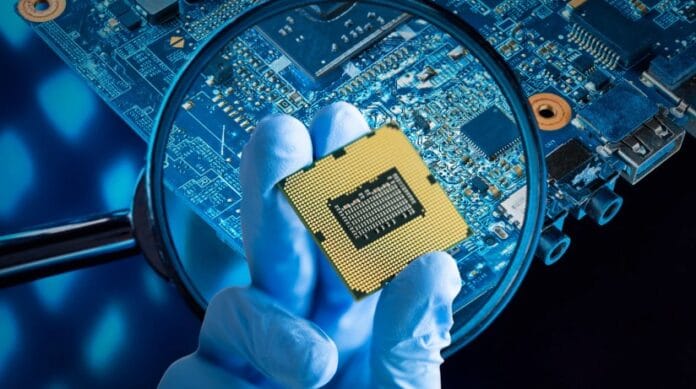September 8, 2025: In a bid to establish India as a global semiconductor powerhouse, the government is accelerating its plans for India Semiconductor Mission (ISM 2.0), with a cabinet note set to be presented by the end of October 2025.
The revamped initiative, aimed at fostering innovation and strengthening local manufacturing capabilities, promises to reshape the semiconductor ecosystem, attracting massive investments and driving the growth of multiple startups.
For the startup community, ISM 2.0 holds significant promise, expanding the scope of incentives and support to include new segments like compound semiconductor fabs, advanced packaging solutions, and fabless design companies. This shift represents a rare opportunity for small and mid-sized enterprises (SMEs) to tap into one of the world’s most critical industries.
While the government has not officially confirmed the financial allocation, industry insiders are pushing for a $20 billion commitment, nearly double the funding of ISM 1.0, which allocated $10 billion. This increase, when finalized, will be crucial for scaling India’s semiconductor capabilities and ensuring global competitiveness.
The government is actively seeking feedback from industry stakeholders, including startup founders, to fine-tune the mission’s structure and financial outlay.
The $20 billion proposal reflects the current global semiconductor race and the need for India to not only catch up but also leapfrog into leading-edge technologies. With the rupee’s depreciation against the dollar, the funding will need to reflect real-time challenges in attracting multinational investments, ensuring India becomes a key player in the semiconductor value chain.
ISM 2.0: From Fabless Startups to Advanced Packaging: Expanding the Semiconductor Ecosystem
ISM 2.0 will open new doors for startups across various sectors within the semiconductor ecosystem. For example, compound semiconductor fabs, although less capital-intensive than traditional silicon fabs, are expected to be eligible for subsidies under the scheme. These components are crucial for next-generation technologies such as 5G, AI, and electric vehicles (EVs), areas in which India is aiming to become a global leader.
Additionally, advanced packaging, a critical area that has seen rapid innovation globally, will receive substantial backing. This is a game-changer for small and mid-sized tech firms focused on semiconductor packaging technologies, enabling them to scale quickly with the government’s financial support.
The government also plans to address the fabless design companies, those which focus on the intellectual property (IP) and design of semiconductors without physically manufacturing them. This could be the key to fueling innovation in India’s tech startup ecosystem, providing a fresh avenue for entrepreneurs to build cutting-edge semiconductor IP and sell them globally.
For India’s fast-growing startup community, ISM 2.0 could unlock a treasure trove of opportunities. The government’s focus on developing a local supply chain for semiconductor materials, chemicals, and gases aligns with startup goals to create sustainable and cost-effective solutions for manufacturing. Industry executives have pointed out that projects approved under ISM 1.0 are already moving to establish local supply chains, reducing dependency on global suppliers and making India a hub for semiconductor raw materials.
The scheme’s tiered support structure also ensures that startups in specialized fields, such as semiconductor design and testing, are not left out. For instance, micro, small, and medium enterprises (MSMEs) will receive targeted incentives, helping them scale at a faster pace and build global competitiveness.
With ISM 1.0 having already approved 10 major projects and nearly exhausted its Rs 65,000 crore budget, the transition to ISM 2.0 is seen as a critical step toward sustaining momentum. The inclusion of advanced semiconductor technologies and value-added services such as outsourced semiconductor assembly and test (OSAT) is likely to spur even more private-sector participation, including deep-tech startups.
But there’s a challenge ahead. As government officials have pointed out, the industry’s growth is closely linked to the global supply chain. For India to truly emerge as a semiconductor hub, it must address concerns about intellectual property, talent shortages, and infrastructure. If these issues are tackled head-on, ISM 2.0 could usher in a new wave of startups and entrepreneurial ventures, building not only global manufacturing hubs but also cutting-edge technologies that can compete with the likes of Silicon Valley.
As ISM 2.0 moves closer to its final stages, with the cabinet approval expected by the end of the year, Indian startups must position themselves strategically to leverage the opportunities it presents. The semiconductor industry is complex and capital-intensive, but it also holds the key to unlocking India’s future in the digital economy.
For tech entrepreneurs, design engineers, and manufacturers, the semiconductor revolution could offer fertile ground for launching new ideas and innovations. Government support, alongside a robust talent pool, could transform India into a semiconductor manufacturing powerhouse, a feat that would not only reshape the global tech landscape but also position India as a leader in emerging technologies.



